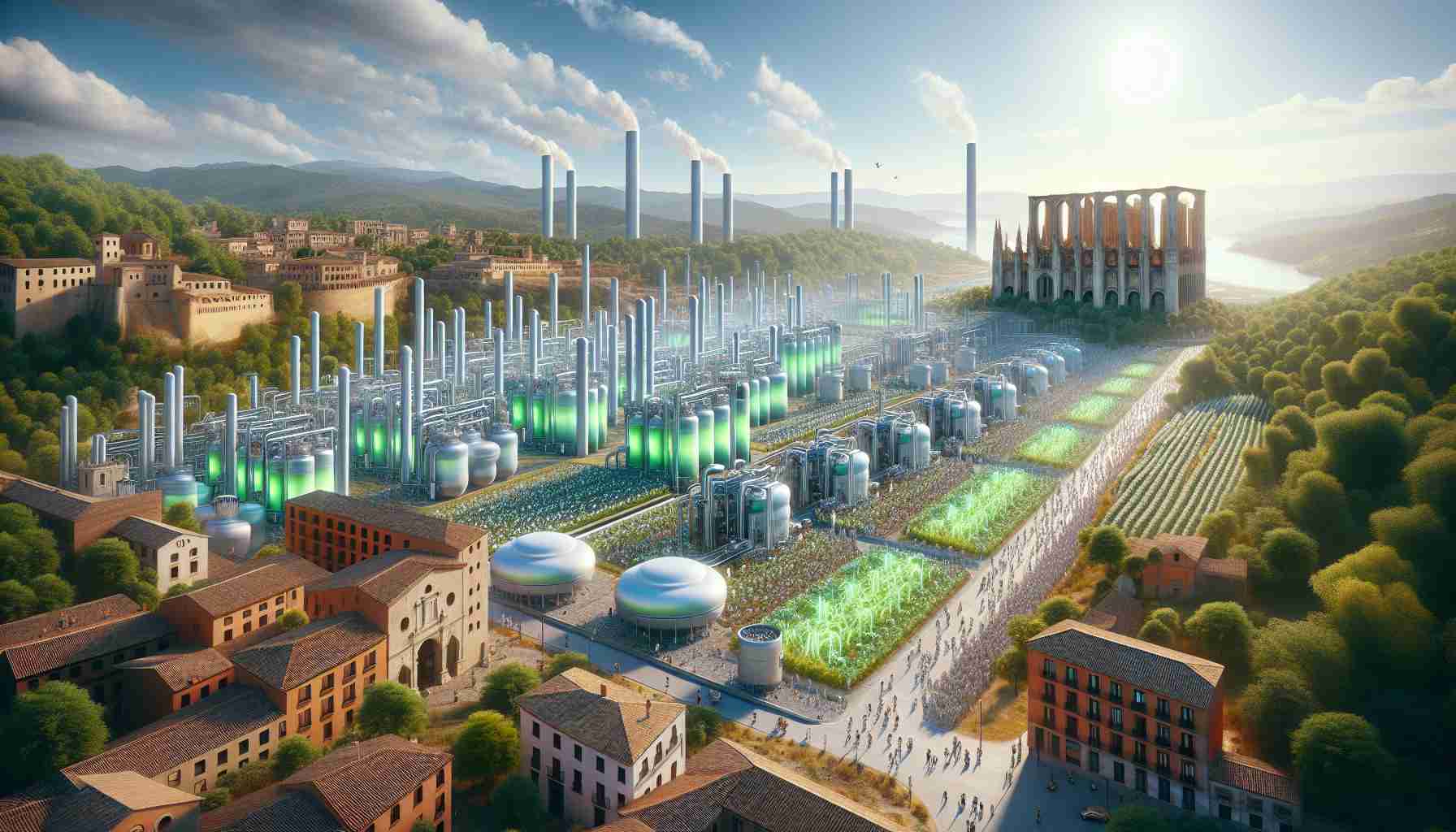- Spain’s largest green hydrogen project, led by BP and Iberdrola, has commenced with a capacity of 25 MW.
- The construction phase will create up to 500 jobs and engage around 25 local companies.
- It aims to cut annual CO2 emissions by 23,000 tons, equivalent to the output of 5,000 cars.
- Investment exceeds €70 million, supported by the Spanish Recovery Plan and NextGenerationEU funding.
- The project is critical for decarbonizing difficult sectors, such as ceramics and chemicals, in Valencia.
- Construction will start with earthworks, moving to civil construction and installation of electrolysers by late 2025.
- The facility is expected to begin operations by the third quarter of 2026.
In a groundbreaking development for sustainable energy, construction has officially kicked off on Spain’s largest green hydrogen project, spearheaded by BP and Iberdrola. This ambitious venture, boasting a capacity of 25 MW, promises to redefine energy production and significantly reduce carbon emissions.
The construction phase alone is set to generate up to 500 jobs, with around 25 local companies contributing to this monumental effort. The project starts with extensive earthworks on a 20,000 m² site near BP’s Castellón refinery. By the second quarter of 2025, civil construction will begin, ramping up toward the installation of cutting-edge electrolysers by late 2025. These electrolysers will harness renewable electricity to split water into hydrogen and oxygen, creating a clean source of energy.
This innovative plant isn’t just about reducing emissions; it has been designed to replace a substantial portion of the refinery’s current reliance on grey hydrogen, leading to an estimated 23,000 tons of CO2 emissions cut annually—equivalent to the emissions from 5,000 cars!
With over €70 million invested, this project stands as a beacon of hope for decarbonizing industries in regions like Valencia, particularly the hard-to-abate ceramics and chemical sectors. Not to mention, it comes backed by funding from the Spanish Recovery Plan and NextGenerationEU, solidifying its strategic importance for both the local economy and the EU’s sustainability goals.
As Spain embarks on this green hydrogen revolution, the ripple effects promise not only to boost employment but also to propel the nation towards a cleaner energy future. Stay tuned, as this project is set to officially power up by the third quarter of 2026!
Spain’s Green Hydrogen Revolution: The Future of Clean Energy
In a significant move towards sustainable energy, Spain is laying the groundwork for its largest green hydrogen project, featuring a 25 MW capacity that aims to transform energy production and slash carbon emissions drastically. Spearheaded by industry giants BP and Iberdrola, this ambitious project promises widespread economic, environmental, and technological benefits that extend beyond initial expectations.
Key Information About the Project
– Timeline and Phases: Following the extensive earthworks on a 20,000 m² site near BP’s Castellón refinery, civil construction is projected to begin in Q2 of 2025, with the installation of advanced electrolysers anticipated by the end of 2025. The project is expected to fully operational by Q3 of 2026.
– Job Creation: The construction phase is expected to generate up to 500 new jobs, supported by approximately 25 local companies, which will invigorate the regional economy.
– Environmental Impact: Aside from reducing emissions by an estimated 23,000 tons of CO2 annually, the project aims to replace a significant portion of grey hydrogen used in the refinery, which has traditionally been more carbon-intensive.
– Investment and Funding: With a total investment exceeding €70 million, the project is financially supported by the Spanish Recovery Plan and NextGenerationEU, reflecting its importance in the EU’s broader sustainability agenda.
Related Questions
1. What are the main benefits of green hydrogen compared to grey hydrogen?
– Green hydrogen is produced using renewable energy sources, leading to minimal to zero carbon emissions during production. In contrast, grey hydrogen is derived from fossil fuels, releasing significant CO2. The transition to green hydrogen reduces the carbon footprint of various industries, aligning with global sustainability goals.
2. How does this project fit into Spain’s overall renewable energy strategy?
– Spain has committed to achieving climate neutrality by 2050, with an interim goal of generating 74% of its electricity from renewable sources by 2030. This green hydrogen project will help facilitate the decarbonization of hard-to-abate sectors, ultimately contributing to national and EU-wide emissions reduction targets.
3. What implications does this have for the local economy and job market?
– The project is expected to create hundreds of jobs during the construction phase and potentially more in the long-term as operational and maintenance roles arise. Furthermore, it will stimulate local businesses involved in the supply chain and associated industries, leading to economic growth in the Valencia region.
Insights and Trends
– Market Outlook: The green hydrogen market is projected to grow significantly in the coming years, driven by rising demand for clean energy and stringent regulations on carbon emissions. Industry experts forecast that investments in green hydrogen could exceed $100 billion globally by the end of the decade.
– Technological Innovations: The electrolysis technology to be used is at the forefront of energy efficiency, and developments in this field could lead to decreased production costs and enhanced performance of hydrogen as an energy carrier.
– Sustainability Goals: The project showcases Spain’s dedication to renewable energy and sustainability, setting a precedent for future green hydrogen initiatives within the EU and beyond.
For more insights and information, visit the official pages of BP and Iberdrola for their latest updates on this transformative project and their broader sustainability efforts:
BP, Iberdrola.

